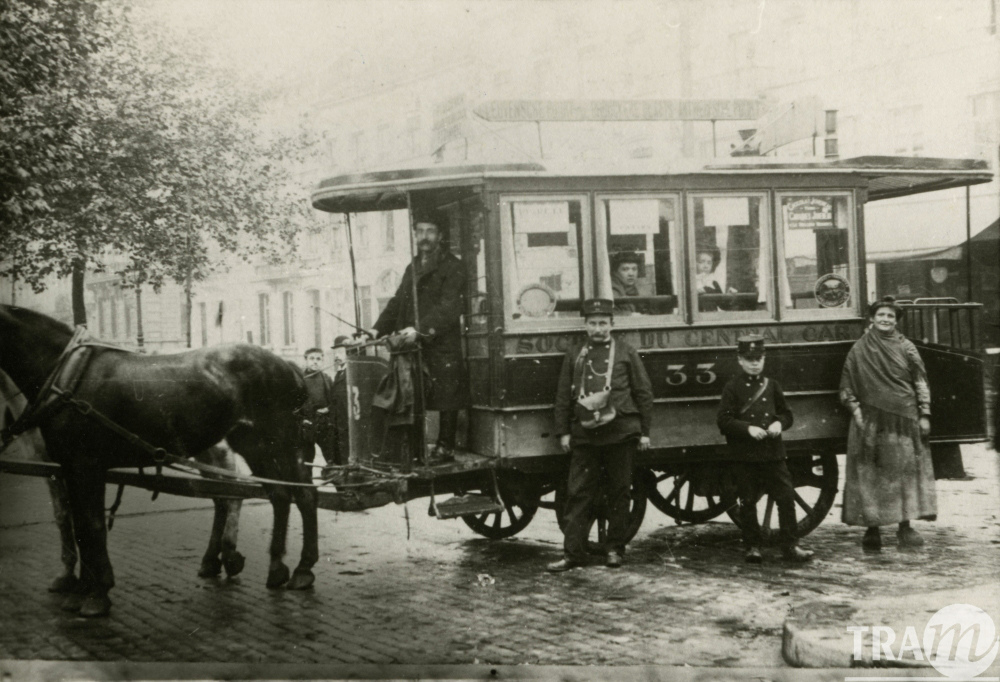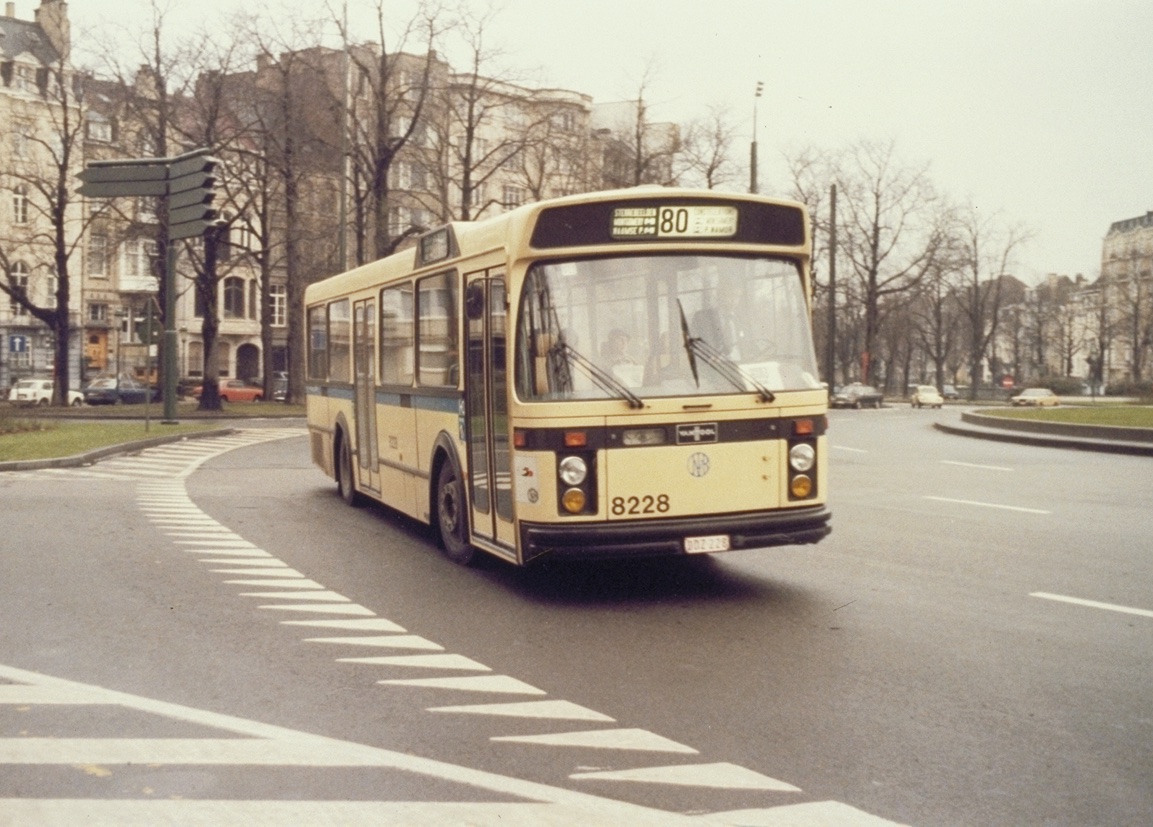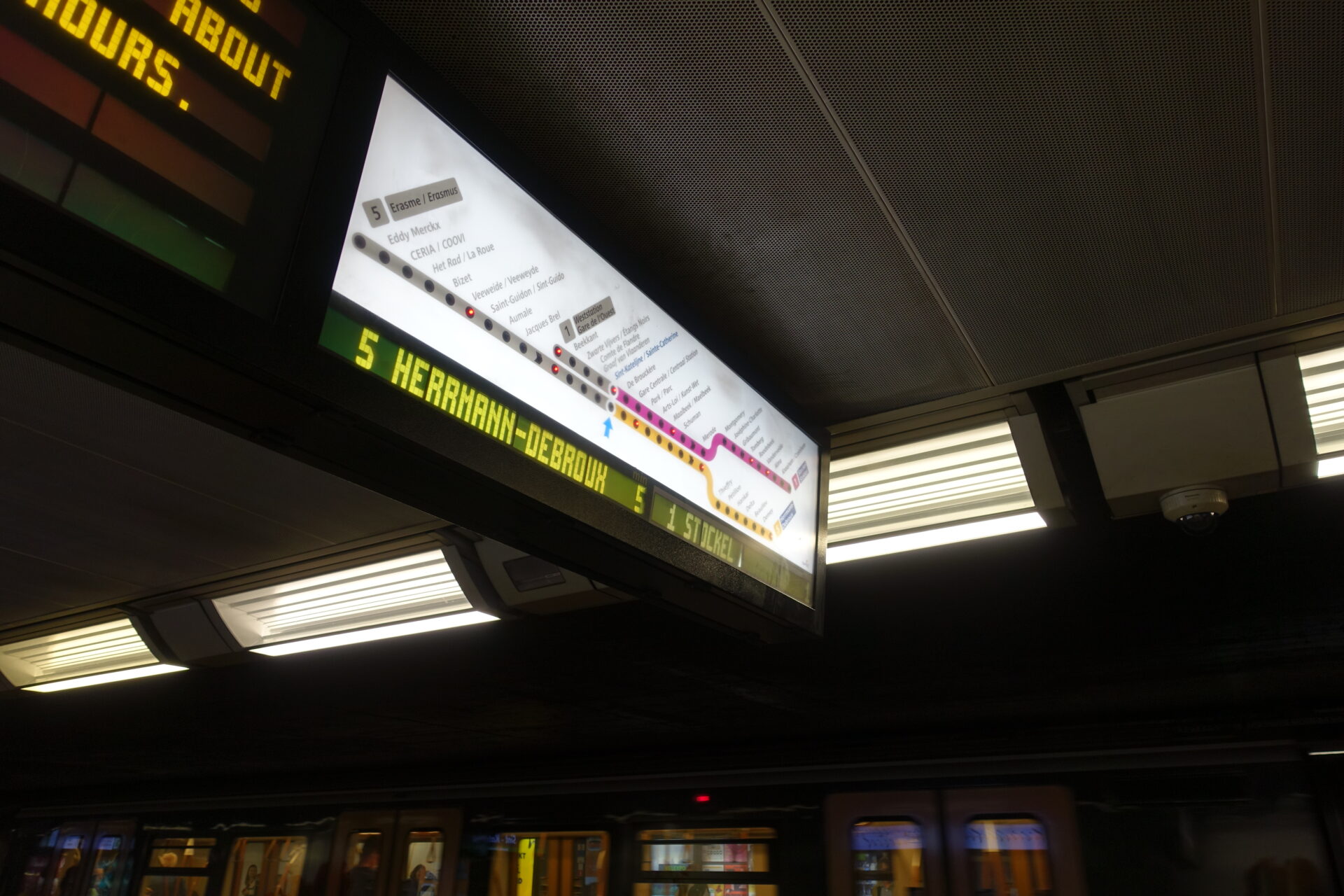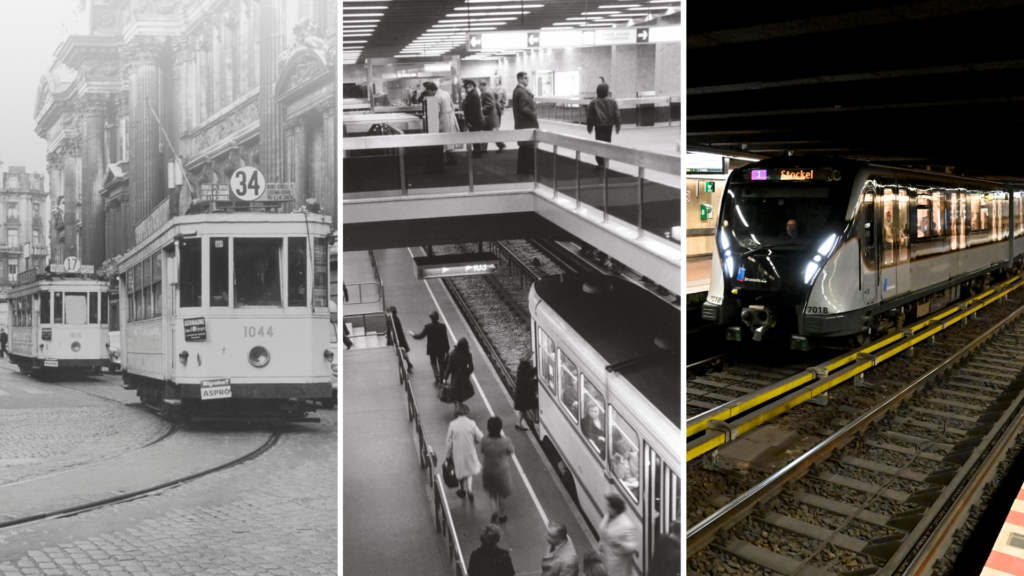It's hard to imagine a Brussels without the public transport operator STIB. However, 70 years ago this was the city's reality. Now, its vehicles are central to Brussels' existence, and that of its residents.
STIB is celebrating its 70 years of existence in 2024, making this the perfect moment to look back at the company's history and how public transport in the city has evolved over these seven decades.
Making connections
Decades ago, Brussels residents were far less mobile and the city more a collection of smaller neighbourhoods than the cohesive space we know today.
Though a rail line between Brussels and Mechelen was built in 1835, the need to travel shorter distances within the city was also felt, leading to various private omnibus companies serving this function. By 1867-1868, seven horse-drawn omnibus lines operating horse-drawn vehicles were running through Brussels.

Omnibus of la Société du Central Car. Credit: Brussels Tram Museum (collection MTUB)
But these were unprofitable and uncomfortable and were soon superseded by trams, which at that time were vehicles set on rails and pulled by horses. The first full track was inaugurated in 1869 between Porte de Namur and Bois de la Cambre.
To cut costs and improve efficiency, horses were replaced by electric trams from 1869. During the First and Second World Wars and the inter-war period, the trams are operated by Les Tramways bruxellois.
1924 saw the first bus line between north and south Brussels and a second line between Place de la Monnaie and Boulevard General Jacques.
The birth of STIB
It wasn't until 1 January 1954 that the Belgian State, the province of Brabant and 21 Brussels municipalities (now just 19) joined 'Les Tramways bruxellois', from which the 'Brussels Inter-Communal Transport Company' (STIB) emerged.
In 1955, STIB also acquired the company 'Les Autobus bruxellois', which operated the buses in the capital. In 1956, line 49 became the first "STIB" bus line, running from Place Bockstael to Gare du Midi.

Two vintage trams on the Rue Henri Maus by the Bourse in the city centre (sometime in 1950s). Credit: STIB
Immediately, the company prepared for the 1958 World Exhibition, taking advantage of the large-scale road works for the event to expand its rail network and build the first tram stations on the Heysel. Several tunnels were dug to facilitate the passage of public transport.
Going underground
The 1960s saw buses become preferable to trams. Buses were less expensive and more flexible, but at the same time more people acquired personal cars. As well as competing with public transport, the influx of cars slowed buses in the city's traffic. STIB therefore decided to create a network of underground connections.

A tram in the Schuman pre-metro station. Credit: STIB
In 1965, the construction of the pre-metro near Schuman Square started. The tunnels were first meant for trams but were spacious enough to allow metro trains to pass through as well. In 1969, the above-ground tram went underground and with the first pre-metro tunnels.
To ensure the vehicles can pass through, the trams' power bars gave way to the pantograph. In 1977, STIB equipped all its trams with it.
Bumpy road
The expansion of the underground network meant the number of lines above ground was reduced in order to maintain a high frequency and create common axes for the integration of the future pre-metro.
This streamlining of STIB services didn't go smoothly, with passenger numbers dropping significantly at the end of the 60s.

The first pre-metro line between Schuman and De Brouckère. Credit: STIB
Still, in 1969 the first section of the East-West link – 3.6 kilometres long, consisting of six underground stations – was opened, with an above-ground terminus at Marché aux Poissons.
By 1970 the Small Ring pre-metro was running – a two-kilometre track with four stations between Madou and Porte de Namur. The line was extended to Rogier in 1974.

The terminus of the first pre-metro line. Credit: STIB
Developing fleet
A new type of bus was introduced in 1967, with larger windows to better admire Brussels. Comfort and safety were also improved.

A bus with large windows on line 80 at Montgomery roundabout. Credit: STIB
In 1985, the first articulated buses appeared on the streets of Brussels to ferry the influx of passengers. Today, they account for 40% of the fleet. In 1972, STIB acquired 30 two-way trams of type '7800', equipped with two steering positions and doors on both sides. The success of the two-way vehicles prompted STIB to equip existing trams with two steering posts.

An articulated bus of line 71 at Place des Palais. Credit: STIB
Moving ahead with metro
The start of the 1970s saw STIB make major steps with the metro network, eventually inaugurating the first metro line on 20 September 1976.
The line was 11 km long and served a common axis between De Brouckère and Merode. Beyond Cinquantenaire Park it split towards the south-east (Beaulieu) and north-east (Tomberg) districts. 45 metro carriages were rolled out.
Metro was much-loved among Brussels residents but STIB still faced challenges, with its finances plummetting. In 1978, the Belgian State bought the STIB shares belonging to 'Les Tramways bruxellois', meaning it owned the entire network.
 The conversion of Line 2 on the Small Ring. Credit: STIB
The conversion of Line 2 on the Small Ring. Credit: STIB
However, the company continued to make improvements. In 1981, the metro line was extended westwards, allowing a section to pass under the canal and calling at three new stations: Comte de Flandre, Étangs noirs et Beekkant. Another tunnel was dug on the Small Ring, where the metro crosses the canal at Sainctelette Square.
The subsequent years saw the underground network grow, extending to Herrmann-Debroux on the east and Heysel on the west. In October 1988, Line 2 on the Small Ring was converted into a metro line, paving the way for a fully developed metro network.
Road to the future
In the nineties, STIB started innovating and took a new step in technological evolution. In 1994, stations were fitted with signs that indicated the location of metros using moving red lights. Orange ticket-validating machines were also installed in stations.
Similar waiting time displays were later integrated into bus and tram stops. In 1999 the STIB website was launched, and two years later passengers could look up their routes online. Later, vehicles could be monitored in real-time at any time of the day.

Waiting times for the metro. Credit: The Brussels Times
Throughout the years, STIB introduced a completely new bus fleet and new trams took to the tracks, replacing the blue and yellow design. In 2009, the Brussels metro underwent the most radical evolution since its inauguration in 1976, with the underground network reorganised to make the line 2 loop on the Small Ring.
STIB purchased 100% electric and electric hybrid buses in 2018 to make travelling by public transport even more environmentally friendly. Three years later, it started testing the hydrogen bus to help STIB in its energy transition.
Also in 2021 it deployed the new 'M7' type metro trains with automatic doors and more space for people with reduced mobility. In 2023 STIB installed two more modern iterations of these M7 metro carriages on metro lines 2 and 6, providing travellers with more comfort and additional capacity. "Tram New Generation" (TNG) was also launched, bringing newer T3000 and T4000 trams to the network.
The company has ambitions to completely electrify the bus fleet by 2035 (90% is already made up of hybrid and electric vehicles). It is also in the process of optimising the way public transport integrates with Belgium's wider transport networks with Floyd, the first app combining all modes of transport.

The FLOYA app connects all forms of transport in Brussels. Credit: Belga
2023 was a challenging year for the company, with work on the Metro Line 3 paused and now heavily delayed. However new lines are still planned or under construction.
The Brussels government and STIB board of directors signed the new 2024-2028 management agreement at the end of last year. This will ensure the company can provide the operation of its public transport offer for another four years.
STIB will operate four metro lines (with the addition of Metro Line 3), 18 tram lines, spread over 150 km and 55 bus lines in 2024.

